Description
What This Product Solves
In the intricate web of distributed control systems like those powering utilities and heavy industry, seamless communication between central controllers and remote field devices often falters under the strain of legacy serial protocols—envision a substation where RS485 links to RTUs drop packets amid electrical transients, or a boiler house where Modbus polling lags, delaying fault detection and risking thermal runaways that cascade into multi-hour scrams. These disruptions not only erode process control precision but also amplify exposure in safety-critical loops, where NERC-mandated response times demand sub-second acknowledgments, yet noisy backhauls introduce jitter that forces over-conservative tuning and hidden inefficiencies.
The Emerson 1C31166G02 counters this as a Serial Link Controller module within the Ovation DCS, crafted to orchestrate robust, multi-protocol serial traffic over RS485/RS232 trunks, ensuring deterministic data exchange that keeps your I/O signals crisp and commands authoritative. It proves vital in hybrid environments, such as migrating Westinghouse WDPF setups to Ovation backbones or extending reach to third-party sensors in sprawling water treatment plants, where modular integration hinges on drop-in controllers that bridge without extensive rewiring. For teams engineering high-reliability industrial automation, it intervenes when native Ethernet falls short on legacy ties, filtering EMI-induced errors to uphold signal integrity across 1km+ runs.
By latching onto Ovation’s IONet for upstream fusion, the Emerson 1C31166G02 empowers granular polling of DNP3 meters or PROFIBUS slaves, slashing latency in alarm propagation and enabling predictive diagnostics that spot comms drift before it bites. In essence, it reclaims the fluidity of your control narrative, turning fragmented serial islands into a unified, resilient mesh—crucial for anyone balancing uptime against the creep of obsolescence in process control realms where every handshake safeguards the bottom line.
How the Product Works & Fits into a System
The Emerson 1C31166G02 serves as the traffic director for serial I/O in Ovation architectures, plugging into an EMOD or PMOD base to manage dual-port RS232/RS485 interfaces that convert asynchronous data streams into synchronized Ovation packets—handling framing, parity checks, and baud rate arbitration up to 3.125 Mbps on RS485, while throttling RS232 to 115 kbps for legacy ties. It buffers inbound queries from the R1120 CPU, dispatches them over 4-wire twisted pairs with automatic direction control, and echoes responses back via the local bus, all while embedding CRC validation to discard corrupted frames without stalling the scan cycle.
Tucked into the communications stratum of your I/O stack, it resides in a backplane carrier, sourcing 5/24VDC from the chassis to drive up to 32-node daisy chains, and it meshes with IONet for fiber-extended redundancy, where dual controllers failover transparently on link faults—vital for ring-configured networks spanning turbine enclosures to control rooms. Protocol stack includes Modbus master/slave modes for RTU polling, DNP3 for SCADA handshakes, and PROFIBUS DP for actuator herds, configurable via Ovation’s tag database to map serial addresses to logical points without custom ladders.
Diagnostics pulse through front LEDs for port activity and error tallies, with a dry-contact relay for hard ESD alarms that integrate into your sequence-of-events logger. In a layered setup, it anchors the field layer, upstream of analog multiplexers and downstream of Ethernet gateways, facilitating hybrid flows—like tunneling Modbus over IONet for remote HMI access. For a hydro dam retrofit, the Emerson 1C31166G02 might orchestrate gate position queries from PROFIBUS valves, injecting noise immunity to sustain 99.99% packet delivery amid generator hum. This seamless embedding trims protocol conversion layers, letting you tune timeouts in software rather than hardware, and positions it as the connective tissue that amplifies Ovation’s determinism across serial frontiers.
- 1C31166G02
| Specification | Details |
|---|---|
| Model Number | 1C31166G02 |
| Brand | Emerson |
| Type | Serial Link Controller Module |
| Input Voltage | 0 to 55 VDC |
| Operating Temp Range | -40°C to +70°C |
| Mounting Style | Ovation Backplane (EMOD/PMOD) |
| Dimensions | 216 x 330 x 50 mm (approx.) |
| Weight | 0.4 kg |
| Interface/Bus | RS232/RS485, Ovation Local Bus |
| Compliance | CE, UL, CSA |
| Supported Protocols | Modbus, DNP3, PROFIBUS DP |
| Typical Power Draw | 4 W |
Real-World Benefits
Integrating the Emerson 1C31166G02 fortifies your DCS with a controller tuned for the unyielding cadence of serial-dependent ops, where its galvanic isolation and auto-baud detection yield error rates below 0.01% over noisy spans—meaning your DNP3 event queues fill without gaps, enabling sharper anomaly detection that nips excursions in the bud and steadies output in fluctuating grids. This precision isn’t abstract; it’s the edge that lets you dial in tighter interlocks, harvesting incremental efficiencies like optimized pump sequencing without the drag of retransmit loops.
Field crews lean on its self-healing diagnostics, which log baud mismatches or wire faults to the Ovation archive, surfacing patterns via trend views—picture isolating a chafed RS485 pair during a routine scan, averting a cascade that could’ve idled a compressor train. The modular snap-in design eases engineering overhead, as hot-swaps preserve session states during maintenance windows, compressing outage footprints in phased modernizations where serial relics linger. Over deployments spanning a decade, it upholds performance consistency through conformal shielding that repels industrial grime, ensuring your serial investments endure without the entropy of frequent recalibrations.
Beyond the immediate, the Emerson 1C31166G02 streamlines scalability by virtualizing ports in software, so adding RTU nodes feels like a config tweak rather than a cabling overhaul—fostering architectures primed for IIoT infusions. It’s these layered efficiencies that recast serial links from legacy burdens to strategic enablers, curbing total lifecycle costs while elevating the reliability quotient in your automation portfolio.
Typical Use Cases
The Emerson 1C31166G02 embeds deeply in power generation facilities, linking Ovation controllers to Modbus RTUs on boiler auxiliaries, shuttling fuel flow and flame status over RS485 amid arc-furnace EMI—pivotal for process control environments where DNP3 latency under 100ms safeguards against overfiring, bolstering critical system uptime during peak demands or black-start sequences. In these high-vibration zones, its 4-wire resilience maintains high reliability, feeding real-time telemetry that fine-tunes combustion for emissions compliance.
Substation automation taps it for PROFIBUS DP coordination of bay controllers, bridging serial trunks to IEDs in switchgear yards under lightning-prone skies, supporting continuous uptime in grid tie-ins where fast data cycles from breaker status prevent overload propagations. Harsh weather and rodent chews challenge cabling, yet the module’s fault-tolerant buffering ensures signal fidelity for seamless phasor syncing.
In wastewater networks, the Emerson 1C31166G02 drives serial polls to remote Modbus pumps, integrating lift station levels with central SCADA amid flooded vaults and corrosive brine—essential for used in aeration basins where comms dropouts risk overflows and permit breaches. Across utilities, transmission, and municipal processing, this controller powers applications yearning for ironclad serial bridging in adversarial terrains, converting protocol mazes into streamlined safeguards for resilient throughput.
1C31166G01 – Prior iteration with single-port RS485 focus for basic RTU links.
1C31169G02 – Expanded variant supporting additional baud rates for high-speed PROFIBUS.
1C31203G01 – Remote serial node extender for IONet-distributed comms chains.
1C31181G01 – Master interface module for Modbus master-slave hierarchies.
1C31222G01 – Digital I/O companion for serial-interlocked discrete controls.
1C31194G03 – Legacy WDPF bridge for Westinghouse-to-Ovation serial migrations.
1C31227G01 – Analog input tie-in for hybrid serial-analog data fusion.
Before docking the Emerson 1C31166G02 into your EMOD carrier, sync its firmware footprint with the R1120 CPU via the Ovation config tool—desyncs breed init timeouts that orphan your serial nodes from the bus. Scrutinize the slot for oxidation or pin deflection from thermal cycling; a contact cleaner swab and ohmmeter sweep flags resistances over 0.1Ω that could skew RS485 balance. Airflow demands a free slot buffer in dense assemblies to cap junction temps below 65°C, especially near VFD heat sinks—model your baud load to confirm. Pre-wire the 4-wire daisy with T568B pinning, and test polarity with a loopback plug to preempt reversal gremlins that invert data bits.
In the field, stewardship favors foresight over frenzy. Biweekly, interrogate the HMI for port stats—steady throughput sans CRC spikes signals harmony, but elevation cues a cable impedance scan with a VNA. Quarterly, demate the DB9 hoods for contact polish with nylon abrasive, banishing verdigris from humid ingress; reaffix with torque wrench at 0.5 Nm to thwart vibration walkouts. Annually, simulate traffic bursts via a protocol analyzer to affirm <1% frame loss across your node count, logging against seasonal baselines for creep detection. Should drops persist, harness Ovation’s remote packet sniffer over VPN, but these cadence keeps the Emerson 1C31166G02 as a vigilant undercurrent, channeling scrutiny to evolution over emergencies.

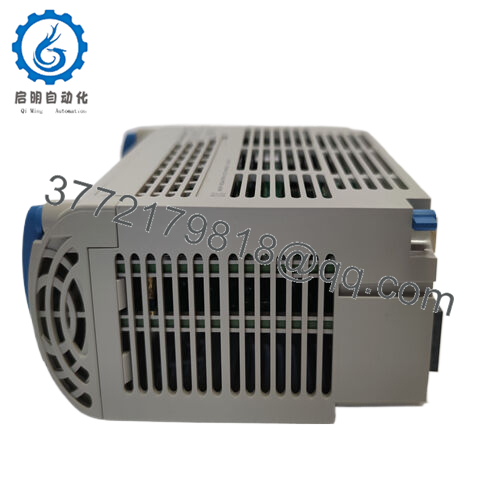
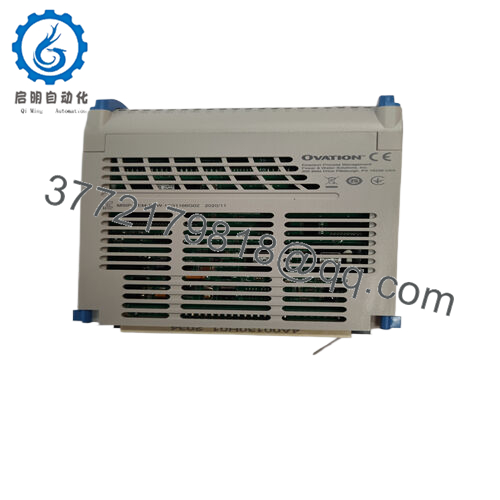
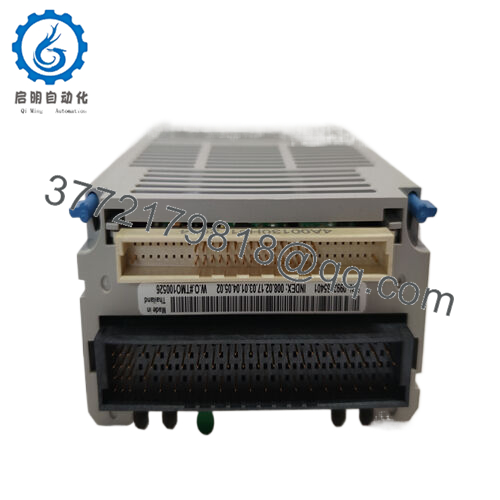
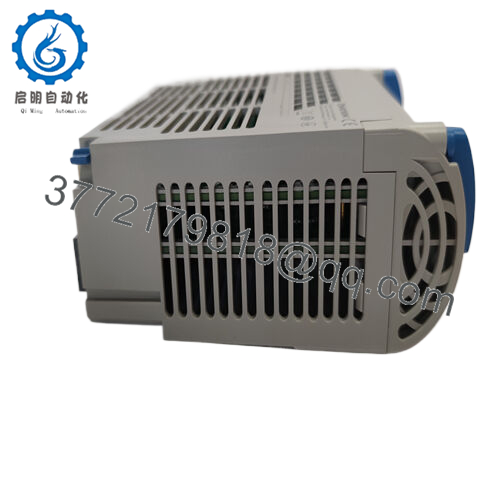
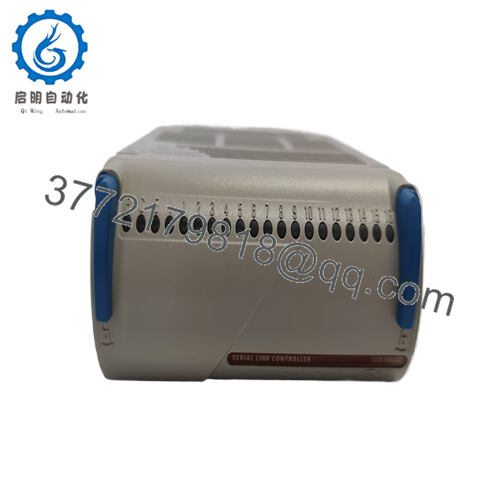
 WhatsApp: +86 16626708626
WhatsApp: +86 16626708626 Email:
Email:  Phone: +86 16626708626
Phone: +86 16626708626


